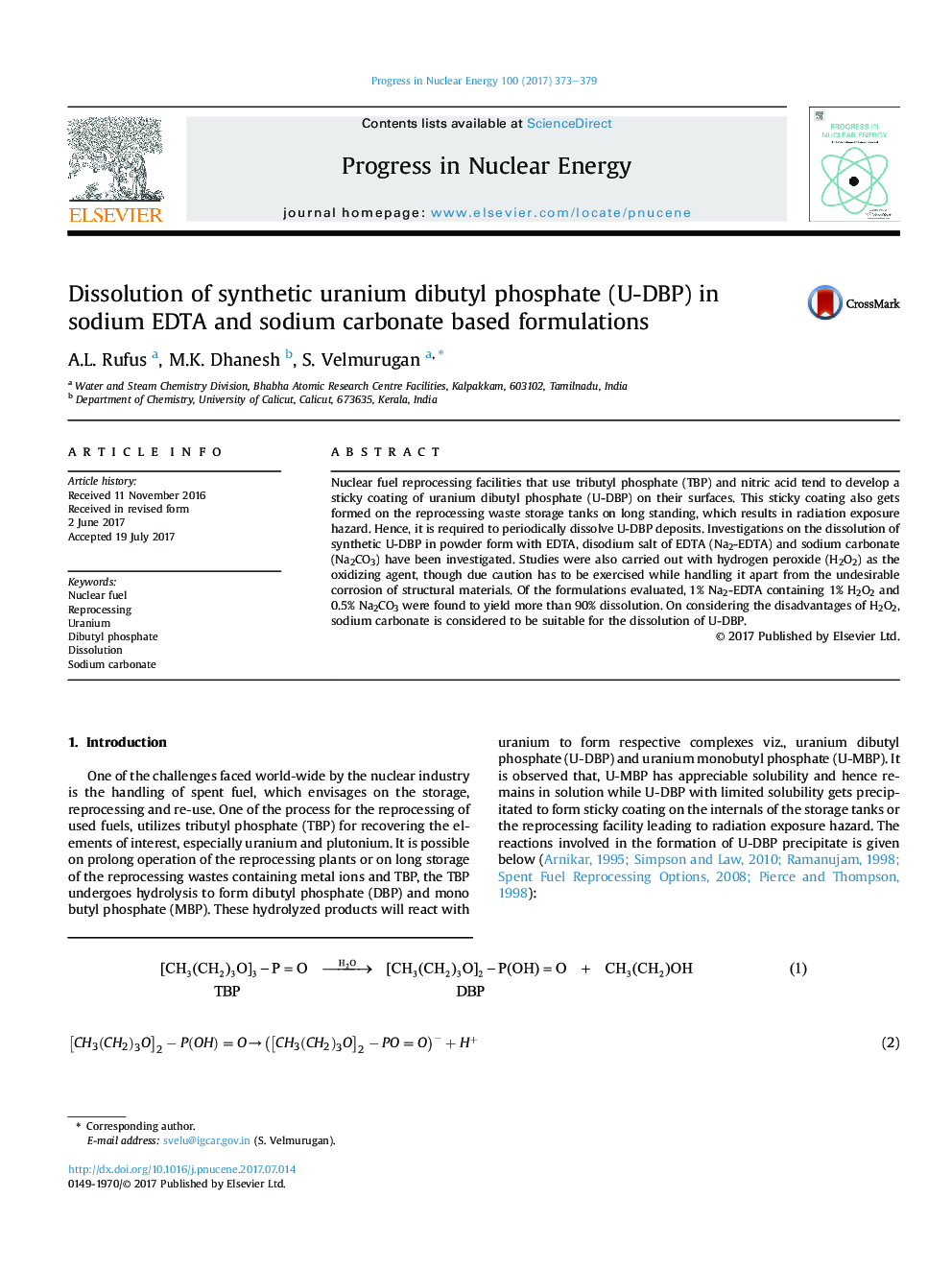| Article ID | Journal | Published Year | Pages | File Type |
|---|---|---|---|---|
| 5478195 | Progress in Nuclear Energy | 2017 | 7 Pages |
Abstract
Nuclear fuel reprocessing facilities that use tributyl phosphate (TBP) and nitric acid tend to develop a sticky coating of uranium dibutyl phosphate (U-DBP) on their surfaces. This sticky coating also gets formed on the reprocessing waste storage tanks on long standing, which results in radiation exposure hazard. Hence, it is required to periodically dissolve U-DBP deposits. Investigations on the dissolution of synthetic U-DBP in powder form with EDTA, disodium salt of EDTA (Na2-EDTA) and sodium carbonate (Na2CO3) have been investigated. Studies were also carried out with hydrogen peroxide (H2O2) as the oxidizing agent, though due caution has to be exercised while handling it apart from the undesirable corrosion of structural materials. Of the formulations evaluated, 1% Na2-EDTA containing 1% H2O2 and 0.5% Na2CO3 were found to yield more than 90% dissolution. On considering the disadvantages of H2O2, sodium carbonate is considered to be suitable for the dissolution of U-DBP.
Related Topics
Physical Sciences and Engineering
Energy
Energy Engineering and Power Technology
Authors
A.L. Rufus, M.K. Dhanesh, S. Velmurugan,
